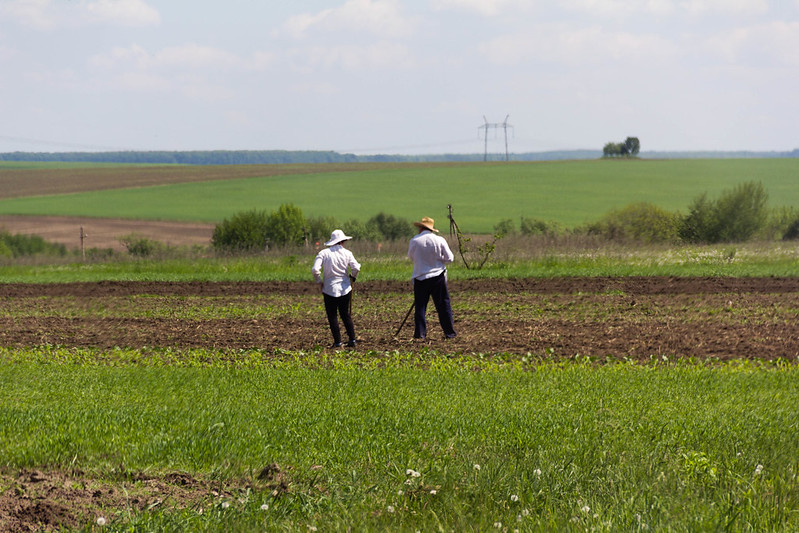Imagine an election in which you not only had to keep track of the date each year, but you also had to personally request a ballot. Such elections exist in Washington, and they are critical ones for matters of conservation and climate change.
Conservation districts (CDs) can help land managers adapt to a rapidly shifting climate. The districts also offer Washingtonians a direct avenue to weigh in on local environmental health and conservation priorities. The trouble is, almost no one is paying attention.
In March 2019, six candidates ran for a seat on King County’s conservation district board. The race received more attention than it had in years, drawing three times as many ballots as the next most popular CD election in the state.
Yet, for all that relative popularity, just 3,535 King County residents cast a vote, less than one-third of one percent of eligible voters. Still, compared with typical CD races, that turnout is almost unheard of. Two thirds of Washington’s CDs didn’t even host elections last year because candidates ran unopposed. Of the 16 contests that did happen, nearly half had fewer than 10 votes.
Current Washington law nearly guarantees the paltry turnout. The law charges CDs with hosting their own annual elections between January and March, which in turn places a heavy burden on voters to keep track of the election and request ballots. Most people don’t even know the districts exist, much less than they can vote for their supervisors.
A new bill winding its way through Olympia this week could change that. It proposes putting CD elections on primary and general ballots in even years, alongside presidential and congressional races. It’s part of a package of good governance bills in Olympia this year aimed at boosting election turnout by shifting all elections to even years.
The bill could give more Washingtonians a voice in local conservation priorities. That’s especially important as Cascadia’s working lands face more uncertainty than ever in the face of climate change.
Conservation districts can spark climate-smart stewardship and revitalize ecosystem health
Washington’s 45 conservation districts wield an underestimated power: the power of contagion. As non-regulatory bodies, the districts can’t require landowners—including farmers, foresters, ranchers, and even urban gardeners—to do anything. But districts can grease the tracks.
Producers trust information from their peers. So when just one farmer in a community tries something new, it increases the likelihood that neighbors will follow suit. CDs aim to spark this domino effect.
Districts offer financial incentives and technical assistance to landowners who adopt or avoid practices according to board priorities. Each budget decision reflects a value: whether to put cutting chemical application above reducing soil erosion, bolstering local food production over fish habitat, urban canopy or a host of other concerns.
To fund their programs, CDs leverage and funnel private, state, and federal funding. They can also request their counties to impose special assessments or other charges on property.
Every decision about how to spend these public funds comes back to the board. The board that almost no one knows about and few Washingtonians weigh in on. Because there are no term limits and little competition, turnover can be glacial, meaning boards can go decades without an infusion of new ideas.
Giving Washington voters a voice in conservation
Each of Washington’s CDs has a board of five supervisors. Here are three things the bill would do to make supervisor elections more accessible:
- Shift elections to Washington’s even year general cycle
Shifting CD elections to coincide with even year election cycles would take advantage of relatively high voter turnout in those years. The move would also relieve voters of the burden of tracking election dates and requesting ballots. The change requires extending supervisor terms from three to four years. This is already standard practice in Oregon and has dramatic impact on election participation. - Make all seats elected positions
The state’s Conservation Commission currently appoints two of each district’s five supervisors. The bill proposes making all five seats elected positions, giving voters more voice in local conservation priorities. - Remove land ownership requirement to hold office
Washington law requires some supervisors to own land. The bill would strike this requirement, making it possible for any district resident to be part of determining a conservation agenda. The move would help combat a history of exclusion from land ownership for communities of color.
Giving Washingtonians a bigger voice in conservation
Farms, forests, and range lands can help buffer the impacts of our changing climate in the coming decades. Choices about how we steward these resources will affect everyone.
Cost presents the biggest obstacle to making CD elections more accessible. In Washington, jurisdictions pay their county election administrators to add their races to a ballot. The bill would mitigate this somewhat, reducing election frequency and making it possible for CDs to share the cost of running an election with every other jurisdiction on the general ballot.
Still, for some CDs, paying for ballot space may remain impossible and require state or county assistance. In Oregon, and many other states, counties cover the cost of CD elections. Overall, it may be time to change Washington’s election funding structure so as not to penalize small jurisdictions.
Reducing voting barriers to give more Washingtonians a voice in conservation priorities would bring good governance to CD elections in a time when we must support our land managers more than ever.

